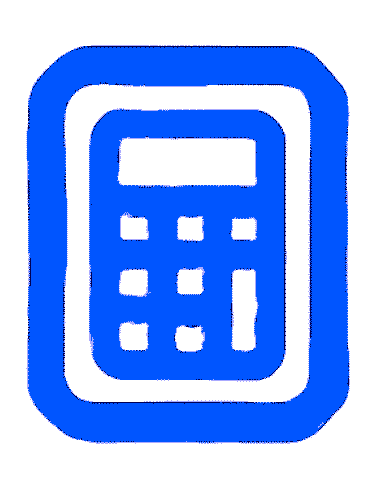Reverse Sales Tax Calculator
Complete suite of Reverse Sales Tax calculations
What is a Reverse Sales Tax Calculator?
A Reverse Sales Tax Calculator is a tool that helps you determine the original price of an item before tax was applied. All you need to know is the final price, which is the tax-inclusive amount, and the tax rate. This simple yet powerful tool works backward from a standard sales tax calculation to calculate the pre-tax amount. If you’ve ever wondered how to figure out what you paid for an item before the tax was added, this calculator makes it easy by reversing the process.
Whether you’re calculating for personal use or for business accounting, this reverse sales tax calculator can help you find the original price or sales tax. It works by taking the tax-inclusive amount and dividing it by a factor derived from the tax rate.
This helps you separate the taxes from the total price paid. It’s especially useful when dealing with state, use, and local taxes, or for regular calculations like those made with a State and Local Sales Tax Calculator. The tool ensures that you can accurately assess the original net price of a sale and the amount paid in taxes.
When to Use a Reverse Sales Tax Calculator
In many common scenarios, a reverse sales tax calculator proves useful. For instance, when you have a receipt showing only the total amount paid and need to determine the actual price of an item before tax was added. It’s also helpful in business accounting to separate the tax amount from the total for purposes like expense reporting and tax filing.
Additionally, if you’re comparing prices between tax-inclusive and tax-exclusive listings, the calculator ensures fair price comparisons, helping you understand the real cost of products. There are many instances where you might need to break down the total price to understand what was paid in tax and what was the actual net price of the item.
How to Calculate Reverse Sales Tax
To calculate the pre-tax amount, you need to use a simple formula. First, divide the tax-inclusive total (the total amount paid) by 1 plus the tax rate as a decimal. For example, if you purchased an item for $858, with a state sales tax rate of 7.25%, you would divide the tax percentage (7.25) by 100 to get 0.0725. Then, add 1 to get 1.0725.
Finally, divide $858 by 1.0725 to get the list price, which is $800. To find the tax amount, multiply the list price by the decimal tax rate (0.0725), resulting in $58. This method works for calculations related to sales tax, including state and local rates, and can be applied to a variety of purchases. You can also consult resources like the State and Local Sales Tax Rates for more information.
Examples
Here are a few examples of using a reverse sales tax calculator.
Example 1 involves a simple basic reverse sales tax calculation where you purchased an item and paid $108.90, including tax. If the sales tax rate is 8.9%, the pre-tax price of the item would be $100.00, and the tax amount is $8.90.
In Example 2, for a higher tax rate calculation, you bought a product with a final price of $235.20 in an area with a 20% sales tax rate. The original price before tax was $196.00, and the tax amount was $39.20.
Another example, Example 3, involves a company that has a receipt for office supplies costing $527.34, with a local sales tax of 7.5%. The actual expense for accounting purposes would be $490.55, and the tax amount is $36.79.
